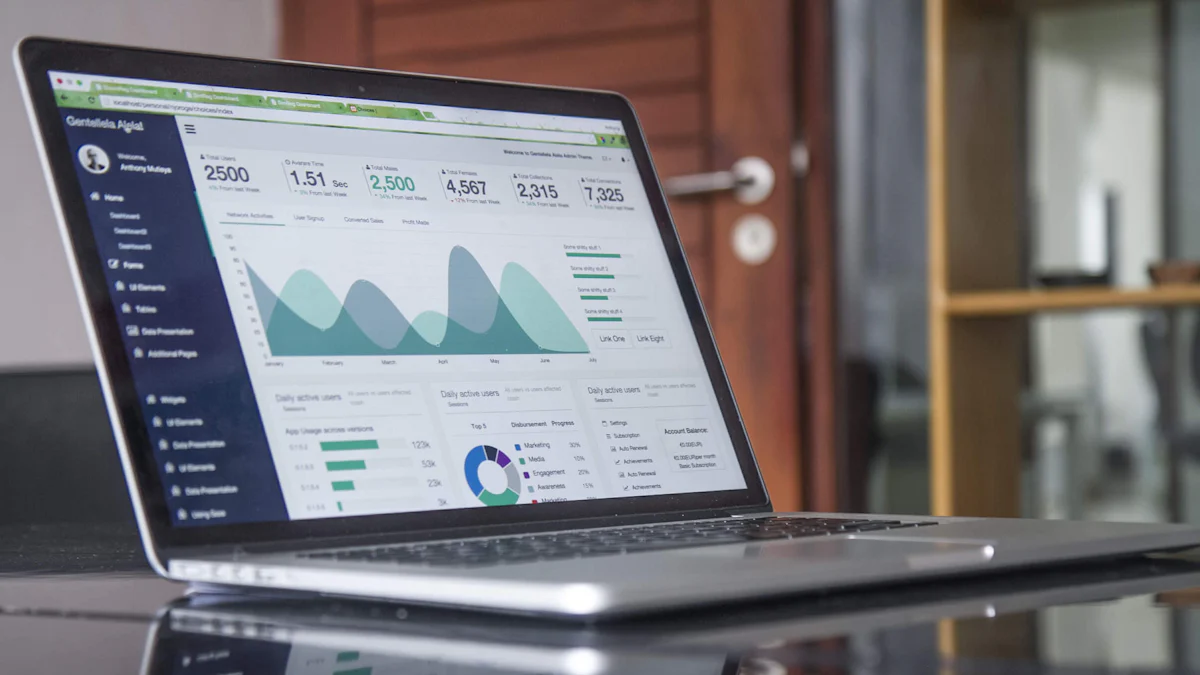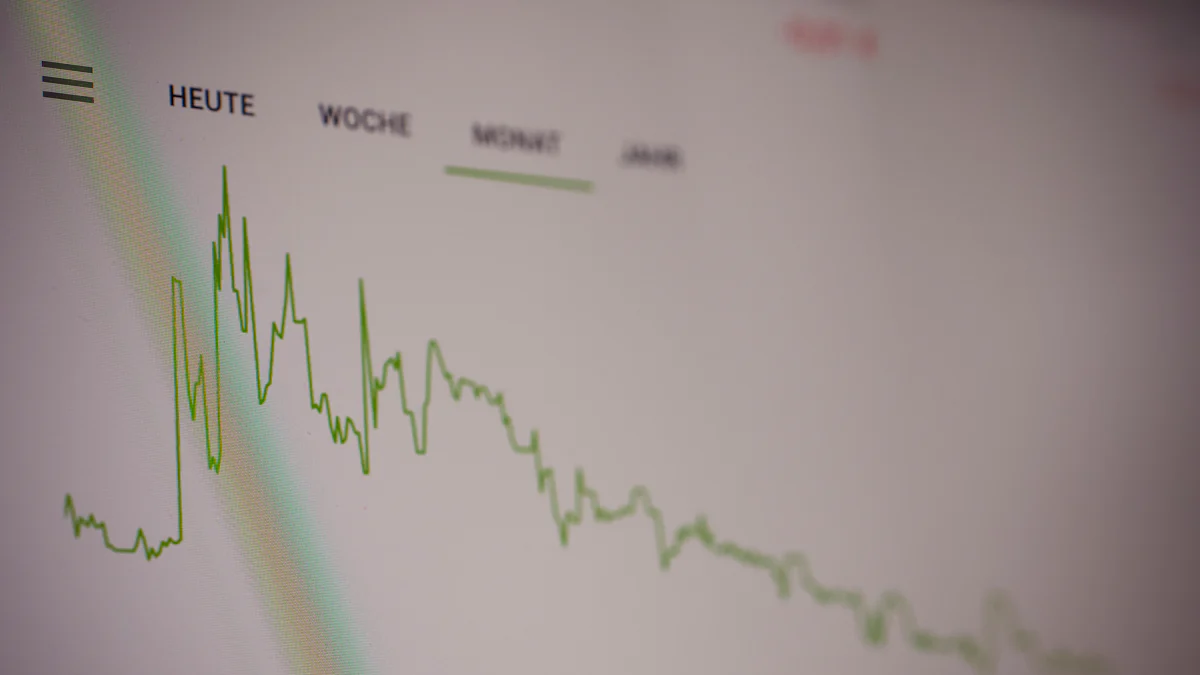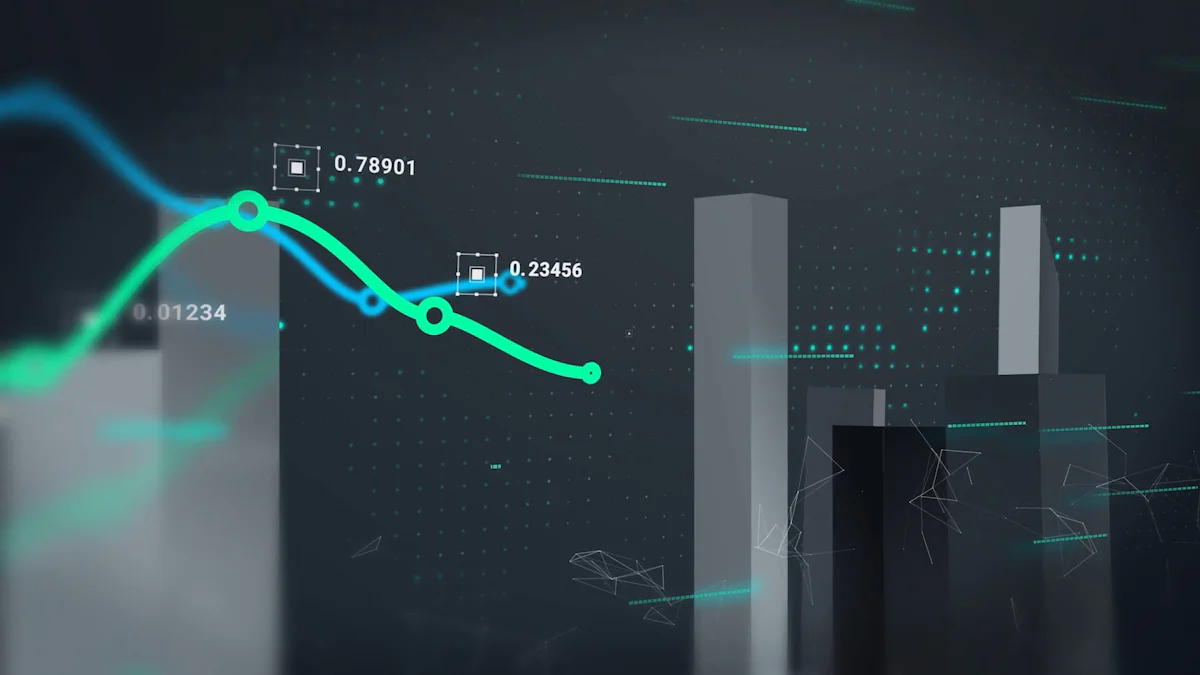Market Growth Insights: Understanding Economic Trends

Understanding market growth and economic trends holds paramount importance in today's global economy. These insights provide critical guidance for businesses, investors, and policymakers. For instance, the Renminbi internationalization index rose by 22.9% in 2023, reflecting significant shifts in global financial dynamics. The blog aims to deliver a comprehensive analysis of current trends and future forecasts, helping stakeholders make informed decisions.
Overview of Market Growth

Definition and Importance
What is Market Growth?
Market growth refers to the increase in the market size of a particular product or service over time. This growth can be measured in terms of revenue, volume, or market share. Businesses often track market growth to understand the potential for expansion and profitability.
Why is Market Growth Important?
Market growth holds critical importance for several reasons. It indicates the health and potential of an industry. Companies use market growth data to make strategic decisions. Investors rely on market growth trends to identify profitable opportunities. Policymakers analyze market growth to gauge economic development and implement appropriate regulations.
Key Drivers of Market Growth
Technological Advancements
Technological advancements drive market growth by introducing innovative products and improving production processes. For example, artificial intelligence (AI) enhances manufacturing efficiency and reduces costs. Companies that adopt new technologies gain a competitive edge and expand their market presence.
Consumer Behavior Changes
Changes in consumer behavior significantly impact market growth. Shifts in preferences, such as increased demand for sustainable products, create new market opportunities. Businesses must adapt to these changes to capture market share and drive growth.
Globalization and Trade Policies
Globalization and trade policies also influence market growth. Open trade policies facilitate the exchange of goods and services across borders. This leads to market expansion and increased competition. Conversely, protectionist policies can restrict market growth by limiting access to international markets.
Measuring Market Growth
Common Metrics and Indicators
Several metrics and indicators measure market growth. Revenue growth, market share, and sales volume are commonly used. Gross Domestic Product (GDP) growth rates provide insights into overall economic health. Analysts use these metrics to evaluate market performance and predict future trends.
Tools and Techniques for Analysis
Various tools and techniques assist in analyzing market growth. Market research surveys collect data on consumer preferences and buying habits. Statistical models forecast future market trends based on historical data. Data visualization tools present complex information in an easily understandable format. These tools enable businesses, investors, and policymakers to make informed decisions.
Economic Trends
Global Economic Overview
Major Economies and Their Performance
The performance of major economies significantly influences global economic trends. The United States economy is expected to continue on a soft-landing path with moderate job gains and easing inflation. The job market momentum shows signs of waning, with slowing payroll growth, rising unemployment, and declining quit rates. Consumer spending and business investment support the U.S. economic forecast for Q2 2024.
The European Union faces challenges due to high energy prices and geopolitical tensions. Germany, as Europe's largest economy, struggles with industrial output declines. France and Italy show modest growth, driven by consumer spending and tourism. The euro's internationalization score of 25.0 reflects its significant role in global finance.
China's economy demonstrates resilience despite external pressures. The renminbi's internationalization score of 6.7 exceeds that of the British pound (3.8) and the Japanese yen (4.4). China's high-end manufacturing sector, particularly in electronics and information technology, contributes to its robust economic performance.
Emerging Markets and Their Impact
Emerging markets play a crucial role in shaping economic trends. India experiences strong growth, driven by domestic consumption and government initiatives like the Production Linked Incentive (PLI) scheme. Vietnam benefits from the "China+1" strategy, attracting companies seeking to diversify production bases.
Brazil and Mexico show mixed performance. Brazil's economic growth faces challenges from political instability and inflation. Mexico benefits from nearshore production trends, enhancing supply chain resilience. These emerging markets contribute to global economic stability and offer new opportunities for investment.
Sector-Specific Trends
Technology Sector
The technology sector remains a key driver of economic trends. Artificial intelligence (AI) and machine learning revolutionize industries by enhancing efficiency and innovation. Companies like Alibaba and Lenovo invest heavily in AI, integrating it into products and services. The technology sector's growth impacts other industries, including automotive and healthcare.
Healthcare Sector
The healthcare sector experiences significant growth due to advancements in medical technology and increased demand for healthcare services. The COVID-19 pandemic accelerates the adoption of telemedicine and digital health solutions. Investments in biotechnology and pharmaceuticals drive innovation and improve patient outcomes.
Energy Sector
The energy sector undergoes a transformation driven by sustainability and climate change concerns. Renewable energy sources, such as solar and wind power, gain prominence. Governments and companies invest in clean energy technologies to reduce carbon emissions and promote environmental protection. The shift towards sustainable energy impacts global economic trends and creates new market opportunities.
Impact of Recent Events
COVID-19 Pandemic
The COVID-19 pandemic profoundly impacts global economic trends. The pandemic disrupts supply chains, alters consumer behavior, and accelerates digital transformation. Governments implement fiscal and monetary policies to mitigate economic fallout. The long-term effects of the pandemic continue to shape economic recovery and growth.
Geopolitical Tensions
Geopolitical tensions influence economic trends by affecting trade policies and market stability. Conflicts and trade disputes create uncertainties for businesses and investors. Countries adopt protectionist measures to safeguard domestic industries, impacting global trade dynamics. Geopolitical tensions necessitate strategic planning and risk management for stakeholders.
Climate Change and Sustainability
Climate change and sustainability become central to economic trends. Governments and companies prioritize environmental protection and sustainable development. Policies promoting green energy, carbon reduction, and resource conservation shape market growth. The focus on sustainability drives innovation and creates new economic opportunities.
Forecasting Future Trends

Predictive Models and Techniques
Econometric Models
Econometric models play a crucial role in forecasting economic trends. These models use statistical methods to analyze economic data. Analysts rely on econometric models to predict future market behavior. For example, econometric models can forecast GDP growth rates. Businesses use these predictions to plan their strategies.
Machine Learning and AI
Machine learning and AI revolutionize predictive modeling. These technologies analyze vast amounts of data quickly. AI-driven models provide more accurate forecasts than traditional methods. For instance, AI predicts production and sales trends in the automotive industry. Companies like Alibaba integrate AI into their products to enhance efficiency. The healthcare sector also benefits from AI's predictive capabilities. Early detection of diseases becomes possible through AI-driven models.
Expected Market Shifts
Technological Innovations
Technological innovations drive significant market shifts. Advances in AI and machine learning impact various industries. The technology sector sees rapid growth due to these innovations. Companies invest heavily in AI to stay competitive. The automotive industry adopts AI for smart manufacturing processes. The healthcare sector uses AI for better patient outcomes. These technological advancements create new market opportunities.
Demographic Changes
Demographic changes influence market dynamics. An aging population increases demand for healthcare services. Younger generations prefer sustainable products. Businesses must adapt to these demographic shifts. Companies that understand these changes gain a competitive edge. Market research helps businesses identify these trends.
Policy and Regulatory Changes
Policy and regulatory changes shape market trends. Governments implement policies to promote sustainability. Regulations on carbon emissions impact the energy sector. Trade policies affect global market dynamics. Businesses must stay informed about these changes. Understanding policy shifts helps companies navigate market challenges.
Strategic Implications for Stakeholders
Businesses
Businesses must adapt to changing market conditions. Technological advancements require continuous innovation. Companies should invest in AI and machine learning. Understanding consumer behavior is essential for market success. Businesses must also comply with regulatory changes. Strategic planning helps companies stay competitive.
Investors
Investors need to stay informed about market trends. Predictive models provide valuable insights for investment decisions. Technological innovations offer new investment opportunities. Understanding demographic changes helps investors identify profitable sectors. Staying updated on policy changes is crucial for risk management.
Policymakers
Policymakers play a vital role in shaping economic trends. Implementing sustainable policies promotes long-term growth. Regulations on technology and trade impact market dynamics. Policymakers must consider the implications of demographic changes. Data-driven insights help in formulating effective policies. Strategic planning ensures economic stability and growth.
The analysis highlights the critical drivers and metrics of market growth. Staying informed about economic trends remains essential for businesses, investors, and policymakers. Leveraging these insights can enhance strategic decision-making and foster competitive advantages.
"Engaging with market data provides a magical moment of clarity and opportunity," as one contributor noted.
Readers should continue exploring detailed economic forecasts and updates to stay ahead in an ever-evolving market landscape. For further insights, consider subscribing to our newsletter or joining our upcoming webinar on economic trends.
See Also
Exploring How Technology Shapes Market Trends
JUSDA's Influence on Market Trends via Customer Needs
Achieving Supply Chain Success with Market Trends
